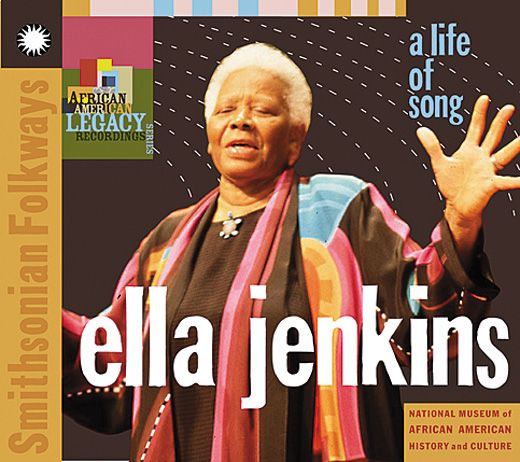Meet Ella Jenkins, the “First Lady of Children’s Music”
The Grammy winner celebrates her 88th birthday with a new album that reflects her lifelong love of kids’ music
/https://tf-cmsv2-smithsonianmag-media.s3.amazonaws.com/filer/ATM-Playlist-Ella-Jenkins-631.jpg)
Ella Jenkins’ repertoire of call-and-response songs have kept generations of children singing along for more than 50 years. On most of the folk songs Jenkins has recorded, children sing, yell, clap, and whistle to the tune of her harmonica, ukelele or her warm alto vocals. With no formal training, Jenkins drew on the sounds of her childhood in the diverse working-class community of south Chicago, blending gospel, blues, Latin dance music and nursery rhymes. Her distinct style earned her the title of “First Lady of Children’s Music” and a Grammy Lifetime Achievement Award. On August 6 she’ll celebrate her 88th birthday and her Life of Song, as her most recent album from Smithsonian Folkways (2011) is rightly titled. Jenkins reflected on her love of children and her own musical childhood in a phone interview with the magazine’s Aviva Shen.
When did you get interested in music?
I’ve always liked music. Even when I was a child in our neighborhood, we sang and made up rhymes. It was very important to be able to carry a tune and to learn songs. In the neighborhood I grew up in [in Chicago] there was the Regal Theater, which had live entertainment. There were singers and tap dancers. Tap dancing really intrigued me. Pretty soon I asked my mother if I could go to one of the centers and learn how to tap dance. I liked listening to the popular singers of the day. Most of the children, if they like the singer, they try to imitate her.
How did your family influence you?
My mother used to say, “Whistling girl and a crowing hen will come to no good end.” But I just liked to whistle when I felt good. I used to hear men and boys whistling while they walked to work, so I would copy them. Pretty soon, I started thinking of songs to whistle.
My Uncle Flood used to go into the dining room in the evening and take out his harmonica, and I used to sit there on the floor, just listening to him. I never really studied any music, not even the harmonica, but that was my first instrument because I picked it up from him. My mother put in some extra work days and bought me a really nice harmonica. Then I started copying the sounds that I heard. The next thing I knew, I was playing the harmonica, and then as an adult, that was one of my favorite instruments.
Why children’s music?
Children always have their own games and songs, and they seemed to be very intrigued by the songs that I grew up with. So I felt, why not share that with them? I see children in my neighborhood, and they know some of the songs that I grew up with and some that I created myself, like “Miss Mary Mack.” There’s a playlot right across the street from me, and I always like to see what the children are doing. Children know when you like them right away.
What was your favorite song growing up?
I liked all the “Mary” songs—“Mary Had a Little Lamb” and “Miss Mary Mack.” I wrote the music to “Miss Mary Mack,” but we used to just speak the lyrics. As you went from neighborhood to neighborhood, there would be a different way of saying it, and then some people would put their own music to it.
How has children’s education changed since you were little?
We’re sharing more with children. Today they have television, radio and movies. I think children are much more alert now. When I was growing up, children were supposed to be seen and not heard.
What is distinct about children’s music?
I like using repetition. If children hear it enough, they’ll learn it. I can tell they’re enjoying it when they join in. I think anyone can develop a sense of musicianship if you can listen and repeat what you hear.
/https://tf-cmsv2-smithsonianmag-media.s3.amazonaws.com/accounts/headshot/ATM-aviva-shen-240.jpg)

/https://tf-cmsv2-smithsonianmag-media.s3.amazonaws.com/accounts/headshot/ATM-aviva-shen-240.jpg)